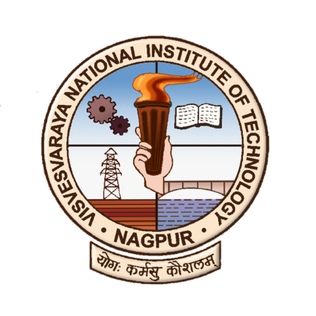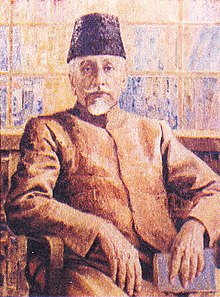The National Institutes of Technology (NITs) are centrally funded technical institutes under the ownership of the Ministry of Education, Government of India. They are governed by the National Institutes of Technology, Science Education, and Research Act, 2007, which declared them institutions of national importance and laid down their powers, duties, and framework for governance. The act lists 31 NITs. Each NIT is autonomous and linked to the others through a common council known as the Council of NITSER, which oversees their administration. All NITs are funded by the Government of India.

National Institute of Technology Calicut, formerly Regional Engineering College Calicut, is a public technical university and an institute of national importance governed by the NIT Act passed by the Parliament of India. The campus is situated 22 kilometres (14 mi) north east of Kozhikode, on the Kozhikode–Mukkam Road. It was established in 1961 and was known as Calicut Regional Engineering College (CREC) until 2002. It is one of the National Institutes of Technology campuses established by the Government of India for imparting high standard technical education to students from all over the country. NIT Calicut hosts a supercomputer on its campus, and has a dedicated nanotechnology department.

National Institute of Technology Warangal is a public technical and research university located in Warangal, India. It is recognised as an Institute of National Importance by the Government of India. The foundation stone for this institute was laid by then Prime Minister Jawaharlal Nehru on 1959, the first in the chain of 31 NITs in the country. The institute was renamed as the National Institute of Technology, Warangal in 2002.

Dr. B. R. Ambedkar National Institute of Technology Jalandhar, formerly Regional Engineering College Jalandhar, is a public engineering university located in Jalandhar, Punjab, India established on 1987. It has been declared as an Institute of National Importance under the Ministry of Human Resource Development, Govt of India. It is a member of the National Institutes of Technology (NITs) system, a group of premier Indian technical institutes governed by the Council of NITSER on 2002. It was founded as a joint venture between the state and the central government, originally under the name Regional Engineering College, Jalandhar, Punjab, India (RECJ). RECJ was established in 1989 by the joint venture of Govt of India and Govt of Punjab on the Land of Village Bidhipur and Village Suranussi of District Jalandhar (Punjab) on the Grand Trunk Road bye-pass.

Visvesvaraya National Institute of Technology Nagpur (VNIT) formally known as Visvesvaraya Regional College of Engineering (VRCE) is a public technical university located in the city of Nagpur, Maharashtra. Established in 1960, the institute is among 31 National Institutes of Technology (NITs) in the country. In 2007, the institute was conferred with the status of Institute of National Importance by the National Institutes of Technology, Science Education and Research Act, 2007 of the Parliament of India with all other NITs

Sardar Vallabhbhai National Institute of Technology, Surat or National Institute of Technology, Surat, is a public technical university established by the Parliament of India in 1961. It is one of 31 National Institutes of Technology in India recognized by the Government of India as an Institute of National Importance. It is the Anchor Institute for the Auto and Engineering sector and will be training the workforce. The project is also designated as the "Center of Excellence under Technical Education Quality Improvement Program" in water resources and flood management and is supported by the World Bank.

National Institute of Technology Kurukshetra is a public technical and research university located in Kurukshetra, Haryana, India. In December 2008, it was accredited with the status of Institute of National Importance (INI). It is one of the 31 National Institutes of Technology established and administered by Government of India. It runs undergraduate and postgraduate in programme Engineering and Doctor of Philosophy programme in Engineering, Sciences and Humanities.

National Institute of Technology Srinagar is a public technical university located in Srinagar, Jammu and Kashmir, India. It is one of the 31 National Institutes of Technology (NITs) and as such is directly under the control of the Ministry of Education (MoE). It was established in 1960 as one of several Regional Engineering Colleges established as part of the Second Five Year Plan (1956–61) by the Government of India. It is governed by the National Institutes of Technology Act, 2007 which has declared it as Institute of National Importance.

National Institute Of Technology Silchar is one of the 31 NITs of India and was established in 1967 as a Regional Engineering College in Silchar. In 2002, it was upgraded to the status of National Institute of Technology and was declared as Institute of National Importance under the National Institutes of Technology Act, 2007.

Heritage Institute of Technology, popularly known as HITK or HIT is a self-financed institute in the state of the West Bengal. The campus is situated on the southern fringes of Kolkata. It is affiliated with Maulana Abul Kalam Azad University of Technology Kolkata.

National Institute of Technology, Raipur is a public technical and research university located in Raipur, the capital of Chhattisgarh. Founded in 2010 with two engineering disciplines, namely Mining Engineering and Metallurgical Engineering, the institute focuses exclusively on science, technology, engineering, and architecture.

National Institute of Technology Hamirpur is a public technical university located in Hamirpur, Himachal Pradesh, India. It was declared to be an Institute of National Importance by the Government of India under the Institutes of Technology Act.

National Institute of Technology Agartala is a technology-oriented institute of higher education established by India's Ministry of Human Resource Development Government of India in Agartala, India. It was founded as Tripura Engineering College in 1965 and declared a National Institute of Technology (NIT) in 2006, thus being recognized as an Institute of National Importance.

Haldia Institute of Technology, better known as HIT Haldia, is an autonomous engineering institute in Haldia, West Bengal, India, approved by All India Council for Technical Education (AICTE), New Delhi, and affiliated to Maulana Abul Kalam Azad University of Technology (MAKAUT). It is an institution maintained by ICARE, a non-profit making voluntary organization. It is one of the oldest accredited academic institution catering technical education in West Bengal. HIT has an enclave campus of approximately 37 acres.

The Lakshmi Narain College of Technology is a technology-oriented institute of higher education established by LNCT Group of Colleges.

National Institute of Technology Goa is an engineering institution in the Indian state of Goa. It was founded in 2010 being one of the 31 National Institutes of Technology in India and is recognised as an Institute of National Importance. It admitted its first batch of students in 2010-11.

National Institute of Technology Sikkim is a public engineering and research institution near the city of Ravangla in Sikkim, India. It is one of the 31 National Institutes of Technology in India and has been declared as an Institute of National Importance by the Government of India. It is an autonomous institute and functioning under the aegis of Ministry of Education, Government of India.

Maulana Abul Kalam Azad University of Technology, West Bengal, formerly known as West Bengal University of Technology (WBUT) is a public state university located in Haringhata, West Bengal, India. Established in 2001 by the West Bengal legislature, it is wholly funded by the Government of West Bengal. The university provides management and engineering degrees through affiliated colleges and in-house departments.

National Institute of Technology Puducherry is an autonomous public technical and research university located in the city of Karaikal in Union Territory of Puducherry and is a coastal enclave in the basin of river Kaveri within the Nagapattinam District of Tamil Nadu. Founded and Established in 2010, it is one among the 31 National institutes of Technology of India and is declared as an Institute of National Importance by the Government of India under National Institutes of Technology, Science Education and Research Act, 2007.

The National Institute of Technology Tiruchirappalli is a national research deemed university near the city of Tiruchirappalli in Tamil Nadu, India. It was founded as Regional Engineering College Tiruchirappalli in 1964 by the governments of India and Tamil Nadu under the affiliation of the University of Madras. The college was granted deemed university status in 2003 with the approval of the University Grants Commission (UGC), the All India Council for Technical Education (AICTE), and the Government of India and renamed the National Institute of Technology Tiruchirappalli.





















